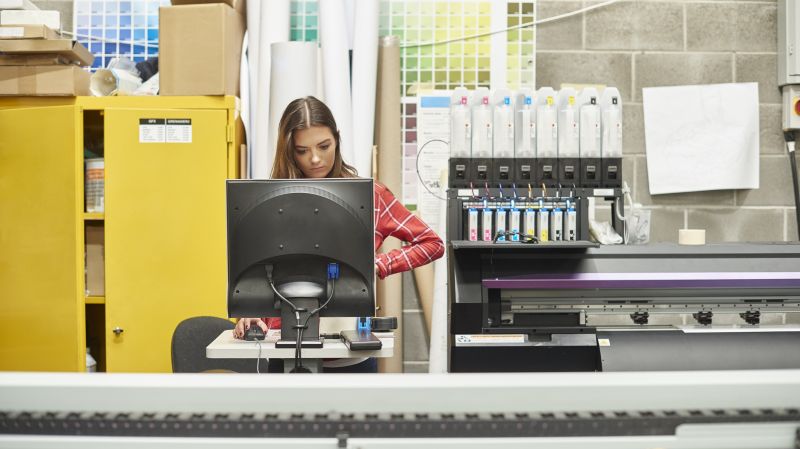How to Push Hybrid Work Forward
Face-to-face or virtual, we need people-centric spaces that spark collaboration and discussion

More than two years ago, when the pandemic began, we were talking about suddenly shifting to virtual workplaces. And there was panic. People said there was no way they could run organizations on Zoom or Slack or Microsoft Teams.
Well, we did it. Despite the challenges, most individuals and organizations pulled it off. In one survey, 71 per cent of employees and 83 per cent of employers said it was a successful transition. People felt they could get their jobs done, and that was borne out by many of the productivity statistics.
But productivity came at a cost. People worked more and worked harder. A survey one year into the pandemic showed a 148 per cent increase in meetings, a 45 per cent increase in chat and 40.6 billion more emails compared to the previous year. Many of us are burnt out.
We may have come a long way, but we are also at a point of reckoning. Emerging from the pandemic, where do we go from here? We don’t want to return to the way things were. We want to maintain flexibility but address some of the issues that were so taxing.
Research has identified three key challenges of working in virtual, hybrid or distributed teams: isolation (fear of being excluded and of not sharing the same experiences with co-workers); fragmentation (lack of shared purpose and a splintering into tiny silos); and confusion (little clarity on communication norms and mixed messages on hybrid arrangements).
To tackle these challenges, we need to build a solid foundation that focuses on engagement to counter isolation, cohesion to avoid fragmentation and clarity to address confusion. This involves intentional thinking that considers: When do we truly need to collaborate, either co-located or as a hybrid group? When must we focus on individual work? How do we carve out time and space for both?
Moving forward, the crucial lesson is to ensure we don’t prioritize only working together (such as video meetings) or only working alone (particularly individual focus time).
What good is an office?
Inevitably, there will be those who ask whether an office is necessary. The answer for most organizations and types of work is clear: people need face-to-face opportunities to collaborate, resolve conflicts and connect on a deep level. They may need to meet with clients or colleagues to nurture an interpersonal connection and trust. They may need to network, mentor or develop their skill set via training.
The purpose of an office is not for people to dress up and commute to work only to sit in their cubicles and attend Zoom meetings all day.
So we need to change how we think about what we do in the office. Whether we’re collaborating face-to-face or virtually, we need people-centric spaces that spark collaboration and discussion.
We also need spaces to lure people back into having impromptu encounters via company lunches or social events. We don’t think of that as work, but it’s important nonetheless. It helps maintain the organizational culture, breaks down silos and builds cohesion.
Don’t forget that we have just been taught for the last two-plus years that we should avoid everyone. People understandably are reticent to come back and engage. They need to be reminded of the benefits of informal interactions, done safely.
Countering distance bias
If you lead a hybrid team, be mindful of distance bias. In a workplace setting, distance bias arises when a worker at home or in an off-site office is seen as less “part of the team” and begins to feel isolated and excluded from the larger group. In such situations, the predictable consequences are mistrust, lack of empathy and misunderstanding.
Leaders must disrupt this bias by changing the status differentials and playing up group identity. Make sure team members are aware of shared purposes and goals and their roles on the team.
Resolve yourself to live in two separate spaces. There will be discussions and decision-making within the office, and virtual workers will be out of the loop. It’s up to team leaders to ensure these discussions and decisions happen on the virtual collaboration platform (and don’t skimp on robust purpose-built hybrid technology).
During hybrid meetings, give off-site workers primacy in the group discussion. Because of distance bias, people in the room are more likely to be heard. By turning to off-site workers first when the discussion begins, you disrupt the distance bias and give them a better chance for their ideas and opinions to be heard.
Another way to disrupt the bias is for you, as a leader, to toggle from leading face-to-face meetings to leading from your remote office. Co-workers will see that they can lead in-person and be listened to and they can lead virtually and be listened to. In this way, leaders model how the team should collaborate, whether in the same room or virtual.
Calibrating communications
While it’s important to have an effective communications platform that enables virtual collaboration and asynchronous work, the decision on how to communicate needs attention. Here, the media richness model should drive your decisions. According to this theory, as tasks become more complex—when key decisions must be made, conflicts need resolution, issues require group brainstorming—we should turn to rich communication media such as video conferencing or face-to-face meetings (or a combination of both for hybrid groups). Low task complexity—such as quick check-ins or progress reports—does not require wasting peoples’ time on face-to-face meetings.
The proliferation of meetings is both inefficient and a source of burnout. If we want people to return to the office, we must ask whether a videoconference is necessary. Will a face-to-face or hybrid meeting add value to the agenda item? Are there better ways to get things done?
A useful exercise is to go through your calendar and try to strip back at least 30 per cent of the scheduled or prospective meetings. While you’re at it, shorten meeting duration too: make 60-minute meetings 45 minutes and 30-minute meetings 20 minutes. You’ll likely find that less is more.
Trust and celebration
Team members who only occasionally connect face-to-face with colleagues may feel trust is merely “nice to have” but not essential. They underestimate, however, the importance of trust in creating strong bonds and helping people feel safe to speak up. When trust erodes, people withdraw. They decide not to update co-workers on a project, for example, figuring they’ll hear about it later. That leads to inefficiencies and conflicts.
Trust is fragile, and social distancing doesn’t help. On virtual or hybrid teams, if we are not building trust, then trust is eroding. As a team leader, where do you focus? While your ability and integrity are two sources of trust, benevolence is just as valuable. It’s something you, as a leader, have the power to offer. You can build trust by treating colleagues with respect, care and compassion. You can see them as whole people. When you model such behaviour, people will open up and feel they’re part of a community, not just a machine.
And while we’re at it, give your team—and yourself—permission to celebrate. We all need to affirm that we’ve been through a lot in the last two years and accomplished much more than we thought possible. Let’s come together and find ways to recognize people for what they’ve contributed and to highlight what we stand for as an organization. Rebuilding and reaffirming our shared identity will carry us through any challenges ahead.
Jana Raver is the E. Marie Shantz Professor of Organizational Behaviour at Smith School of Business.





